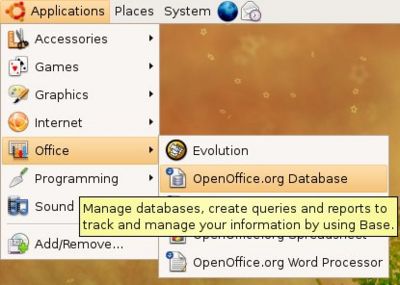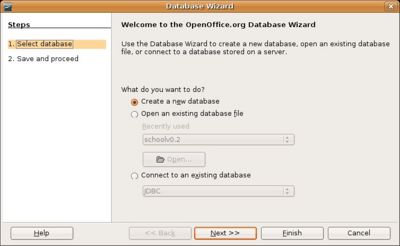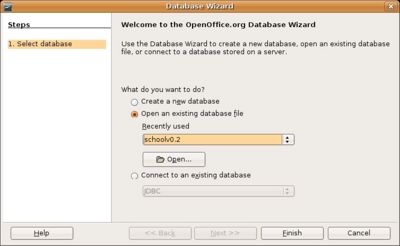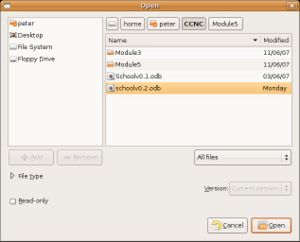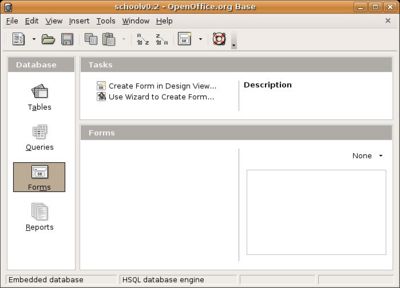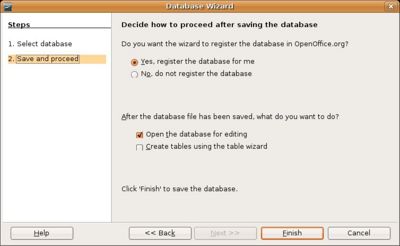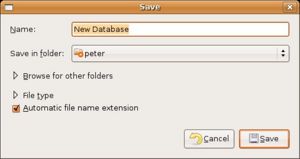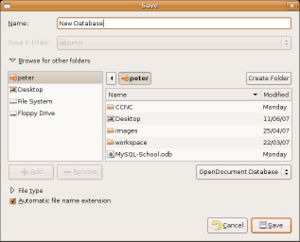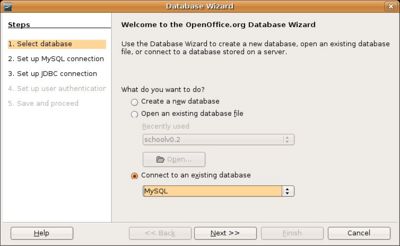CCNC/CCNC Module 5/The database application/First Steps with Databases
| First Steps |
Opening a Database | Login to an existing Database | Create a new Database | Save a Database | Get Help | Close a Database | Self Assessment | Summary & FAQs |
Contents
Opening a Database
Upon completion of this tutorial the learner will be able to:
|
Starting OpenOffice 2.0 Base
From the "Applications" menu in the top left of the Ubuntu Desktop select "Office" then "OpenOffice.org Database". This will present the OpenOffice splash screen as the operating system loads the software.
Selecting an Action
Once the OpenOffice database software has finished loading you will be prompted to select an action. You can either;
- Select database - which means, create a new database or open an existing database
- Save and proceed - which means, register your database or start working with an existing database
Most of the time you will start with "Select database"
Opening an existing Database
To open an existing database choose the "open an existing database file" option, and then select the desired database from the drop down list of available databases. Alternatively if OpenOffice base cannot find the selected database you will be prompted with the open dialog.
After selecting the open button on the dialog box the OpenOffice 2.0 Base software will open the requested database in the application main window.
Creating a new database
If you know you want to start a new database select the option to "Save and proceed". This will locally register your database and prompt you for the location to save this new database.
Connecting to a Database
You may also want to use OpenOffice 2.0 Base against another data source other than the "built-in" OpenOffice database. OpenOffice 2.0 Base provides access to a large selection of data sources including, but not limited to; MySQL, MS-Access, dBase, ODBC, JDBC, Adabas, Etc.
To open another of these data sources select one of the available data sources and follow the prompts to enter the required connection settings.
